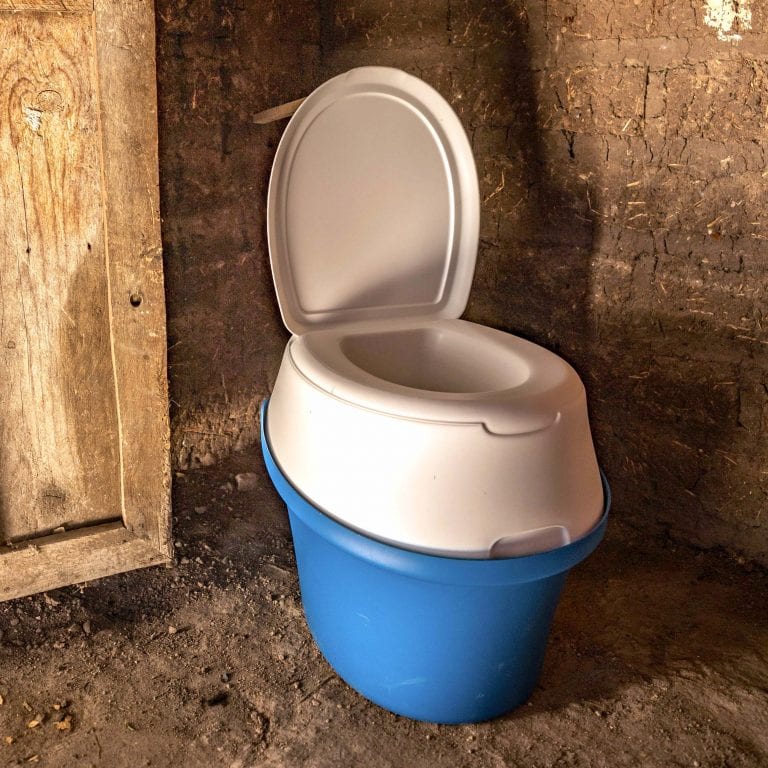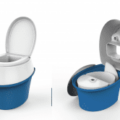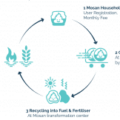Product Description
Mosan is a circular sanitation system, which includes a urine-diverting dry toilet for in-home use. The toilet separates urine and feces into removable containers. Users bring their full containers to service stations, where Mosan staff ensures safe emptying and cleaning.
This circular sanitation service consists of 5 key steps: (1) Containment, (2) Emptying, (3) Transport, (4) Treatment/transformation, & (5) Reuse. The solution was designed to improve people’s health, protect the environment and water sources, reduce CO2 emissions transforming human excreta into resources while creating local job opportunities. All Mosan products have been designed in collaboration with local communities and stakeholders.
Mosan started in 2010 when the designer Mona Mijthab worked with GIZ in Bangladesh. Currently the sanitation service is being implemented in Guatemala at Lake Atitlán.
Market Suggested Retail Price
$5.00
Target Users (Target Impact Group)
Household
Distributors / Implementing Organizations
The Mosan Toilet is part of the Mosan Sanitation Service that is implemented with local partners. Mosan produces the toilet themselves.
Competitive Landscape
Regions
Worldwide
Manufacturing/Building Method
Currently manufactured by vacuum forming PE plastics in Germany and shipped to target regions.Interview with representative in 2019
Intellectural Property Type
Utility models
User Provision Model
Mosan does direct marketing to municipalities and users. During promotion events users can sign up for the Mosan service. House visits for the registration and implementation follow.Interview with representative in 2019
Distributions to Date Status
Mosan has reached more than 60 users during pilot projects. The first users started using the Mosan toilet in 2012 in Kenya. The toilets are still in use. In 2019 one Mosan service is running in Guatemala in Santa Catarina Palopó.
Toilet type
Container-based service
Evacuation method
Dry
Storage conditions
Container storage
Capacity (L)
9 L
Time until emptying
Daily collection frequency
Design Specifications
Mosan is a circular sanitation system, including the Mosan Dry Toilet for in-home use. All Mosan products have been designed in co-creation with affected people and stakeholders.
The circular sanitation service consists of 5 key steps:
Containment: The Mosan Toilet has two removable containers, one for urine and one for feces. Each has a 9L capacity. With 5 family members the toilet can be used for 2-3 days. For larger families extra containers can be provided. Ease of use, durability, low maintenance and an aspirational design are important aspects. Key functions are:
- Ergonomic and elegant design
- Clean separation of urine and feces into removable containers
- Durable HDPE plastics, expected lifetime more than 5 years
- Feces are covered with dry materials (e.g. ash or sawdust) to prevent smell and flies
Emptying:
Twice a week families bring their toilet containers to service stations (or service trucks), where Mosan staff empties the materials into bigger barrels and disinfects the toilet containers.
Transport:
Mosan staff takes care of the transport from collection stations to the transformation center.
Treatment/Transformation:
Urine and feces are separately processed and transformed into valuable products that can be reintroduced to the local and international market.
Reuse:
Transformed excreta can be used as a soil amendment, fertilizer, soil detoxification, or as fuel.
Technical Support
Provided by the manufacturer
Replacement Components
Mosan takes care of replacement and recycling of toilets and components.
Lifecycle
The expected lifespan of the toilet is minimum 5 years.Interview with representative in 2019
Manufacturer Specified Performance Parameters
Improved access to safe sanitation, reduce healthcare costs, reduce environmental pollution, and increase economic opportunities. Achieve this by implementation of safe sealing of containers, safe handling and treatment of feces, and community focused management.
Vetted Performance Status
For the 1-year pilot project in Guatemala, five families (serving 20 people) were provided with a Mosan toilet. Mosan and partners reported the following results: 73,000 L of water were saved, 6,800 L of urine and 3,800 kg of feces were prevented from contaminating the environment, 350 kg of biochar was produced, and 2.2 tons of carbon dioxide emissions were avoided.
Safety
All of the service staff need to wear safety equipment and follow a strict risk sanitation safety plan. Regular capacity building and hygiene training is conducted.
Complementary Technical Systems
People cover feces with sawdust or ash. Containers are lined with paper to make emptying and cleaning for Mosan staff easier.
Mosan offers hygiene education and awareness creation activities. Additionally users get access to low-cost health services in collaboration with local clinics.
Academic Research and References
Nyoka, R., et al., 2017, Sanitation practices and perceptions in Kakuma refugee camp, Kenya: Comparing the status quo with a novel service-based approach, PLoS One 12(7): e0180864.
Water, Engineering, and Development Centre (WEDC), 2014, A collection of contemporary toilet designs, Loughborough University.
Goal 6. Available: https://sdgs.un.org/goals/goal6
Compliance with regulations
Mosan follows international WHO standards and received environmental permissions in Guatemala.Interview with representative in 2019
Evaluation methods
Pilot projects, interviews with users and stakeholders, lab tests of collected material before and after treatment. Interview with representative in 2019
Other Information
Mosan collaborated with GIZ, OXFAM, WSUP, MIT IDIN, and USAID. Mosan was awarded with the German first prize of the Bestform Award 2013, the first prize of the German Hans-Sauer Social Design Award 2015. In 2016 selected as a UBS Social Innovator. In 2016 awarded with Swiss Social Entrepreneurship Award SEIF. In 2017 selected as "Solution that Saves Lives & Supports Development" by the Aid and International Development Forum (AIDF). In 2019 selected as one of the FORBES Top 10 Swiss Start-ups and Top 100 FAMAE Water innovators.
Get more information about Solutions Library and its features.
Learn MoreHave thoughts on how we can improve?
Give Us Feedback

